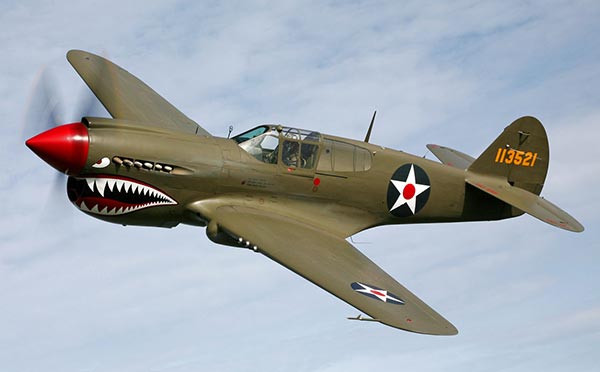
Curtis P-40B
I really wasn't sure where to put this story, but decided on this thread because the unidentified American pilot of the P-40 "Ghost Plane" should still be considered "Missing in Action".
There are many internet versions of this story, but it dates back to World War II, and there are enough verifiable facts to support it. In the many retellings of this intriguing tale, imaginations and speculations have added to the legend. Dates and details change. Probably the best researchers of this story are Curt Norris (who died in 2002), and Michael Lemish. It is their accounts from which most others borrow.
On 2 September 1942, a US Army Air Corps P-40B fighter plane bearing pre-war paint and insignia, appeared in the skies of China (then at war with and partly occupied by Japan). US Army Air Force planes were scrambled to intercept it, and those pilots were certain that the pilot of the older plane was dead, and the plane itself was already shot full of holes. It was coming from the area of Japanese held territory.
The plane's pilot could not be raised on the radio, and he failed to acknowledge any hand signals. The intercepting pilots thought that it could be a captured P-40 being flown by a Japanese pilot.
The "ghost plane" was shot down and note was made of where it crashed. Friendly forces in the area buried the pilot but retrieved a partial diary and some letters from his flight jacket.
The incident has been written about in a number of books and articles, but no one has ever positively identified or determined who the pilot was. Some more recent stories identify him as "Corn Sherrill" but that could be a pseudonym, or simply fiction. No such person could be found in any of the official casualty records.
The most likely theory was that he was a survivor of the fall of the Philippines, and that the plane had been pieced together from parts of several wrecked planes on the Philippine island of Mindanao, by a group of surviving US military.
Here are a few links:
GHOST P-40: Lore, Legends and Her Whereabouts
https://historycollection.com/secrets-past-6-world-war-ii-mysteries/3/
The Ghost Plane - Futility Closet
The Ghost Pilot - Axis History Forum
Myth of the "phantom P-40" shot down in China
Last edited:



